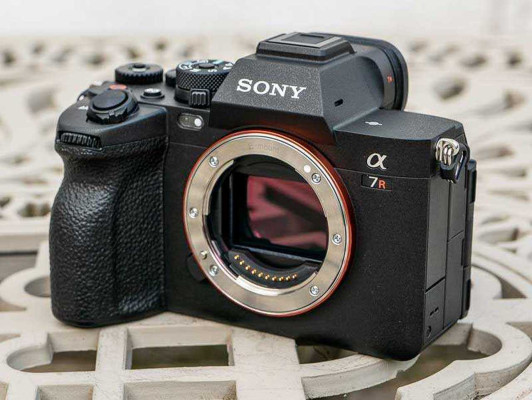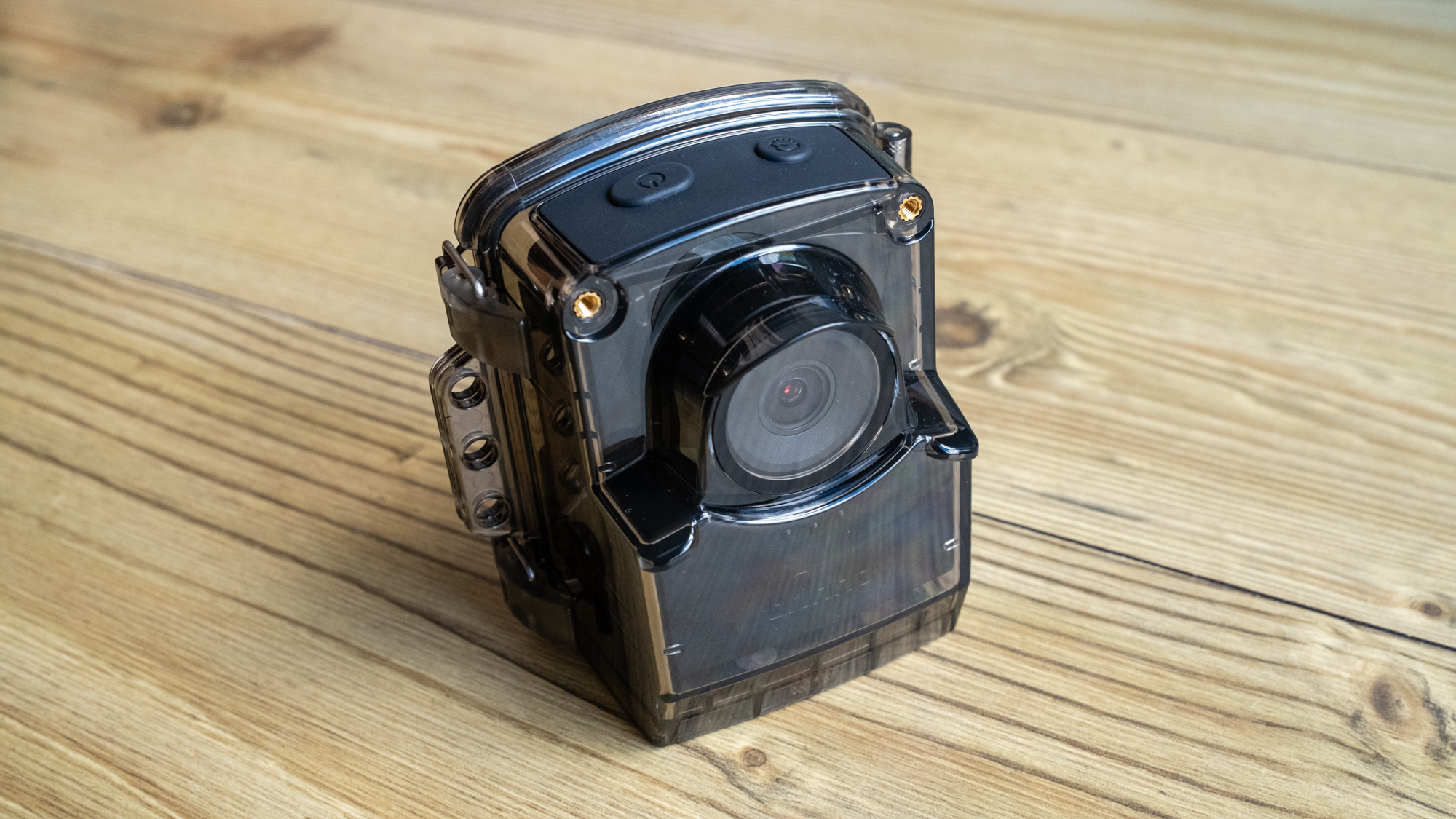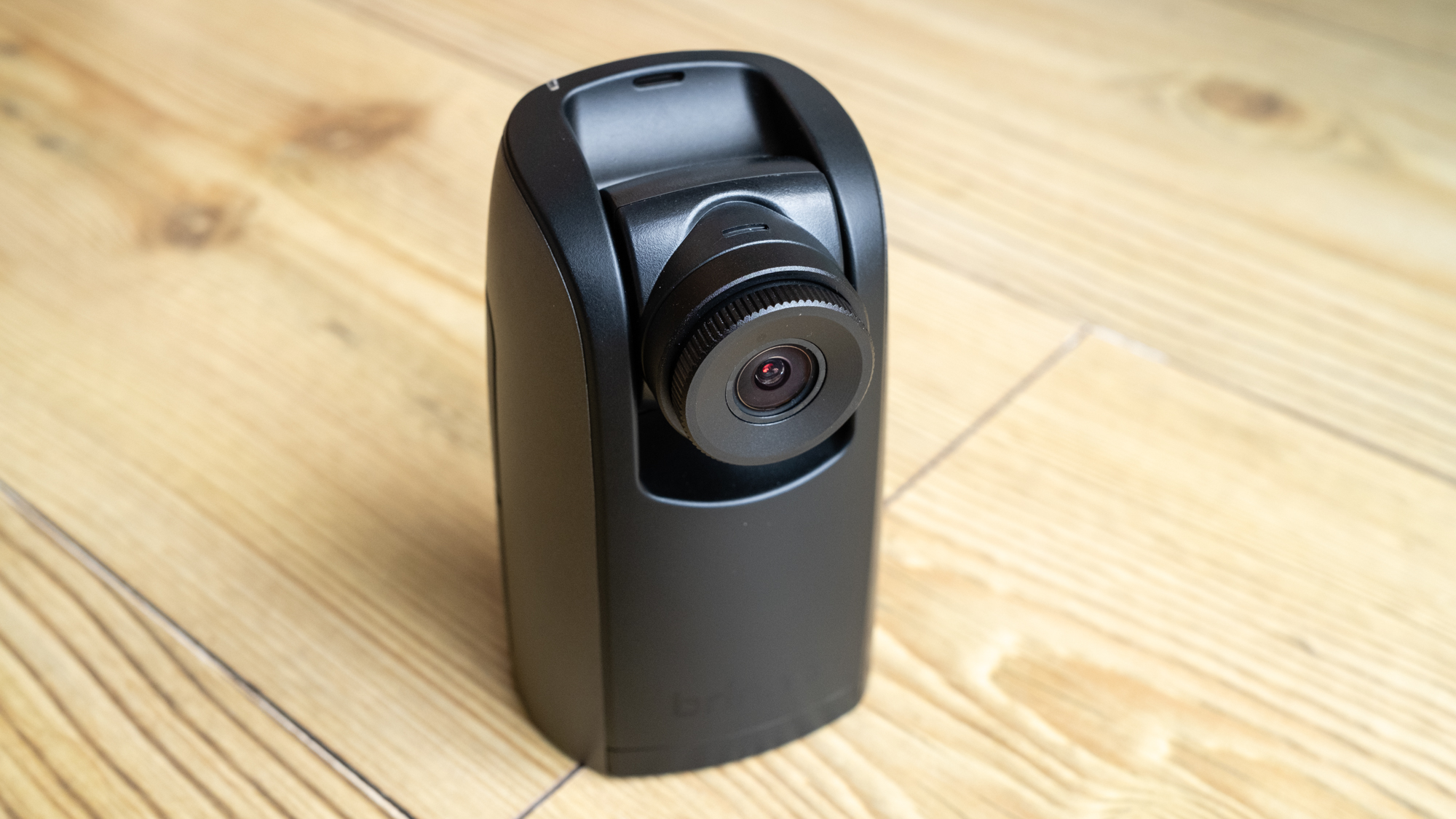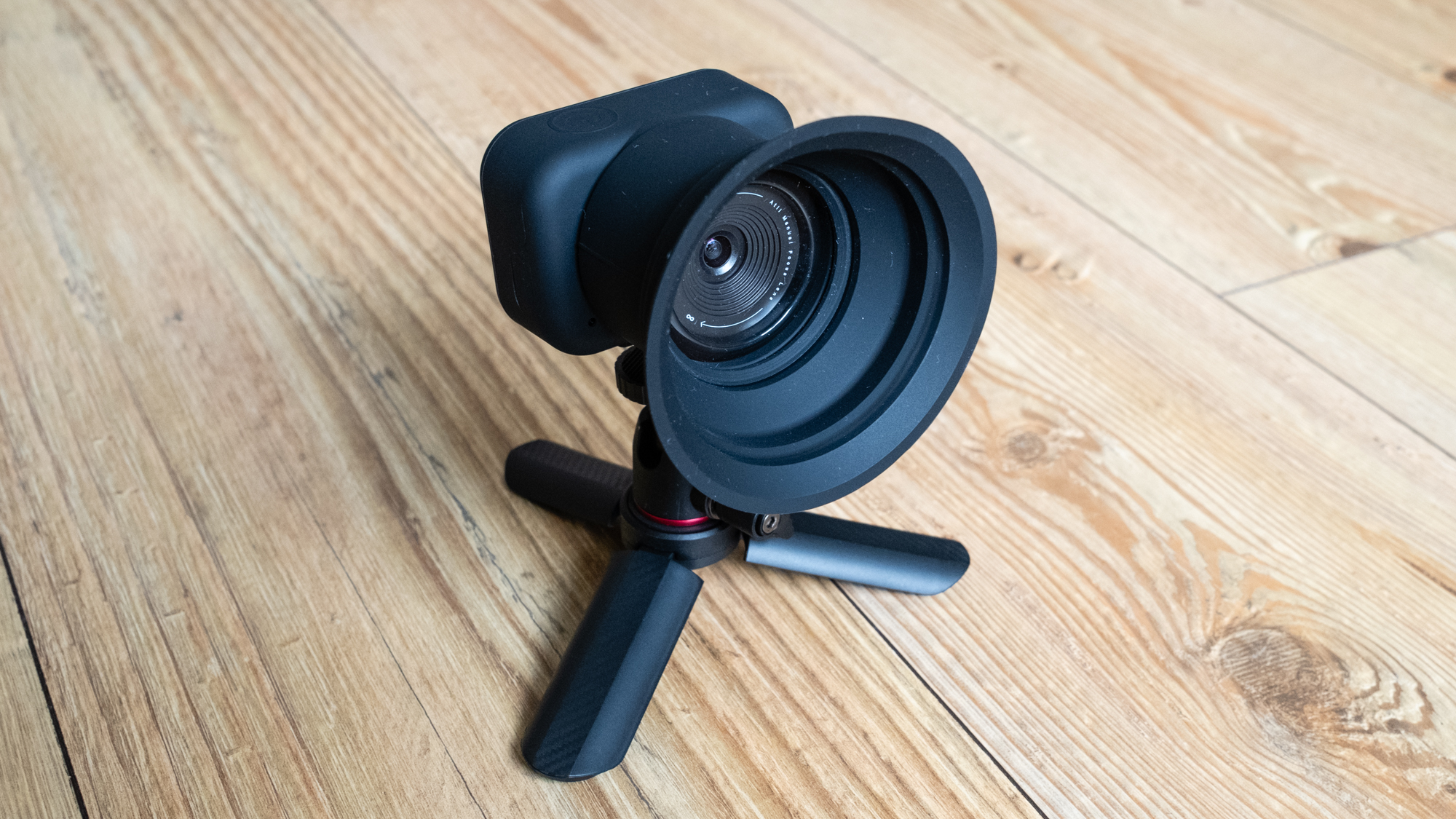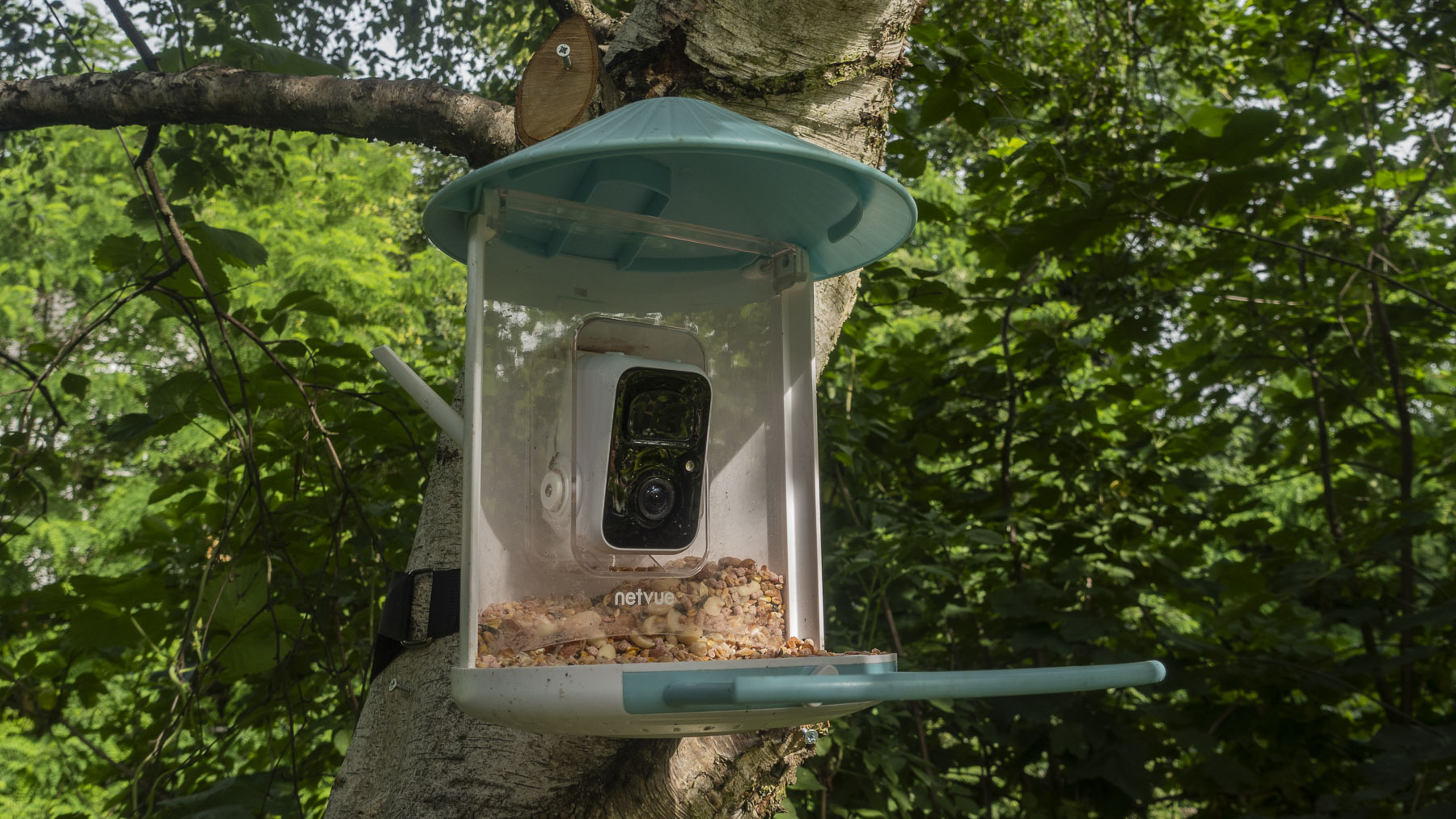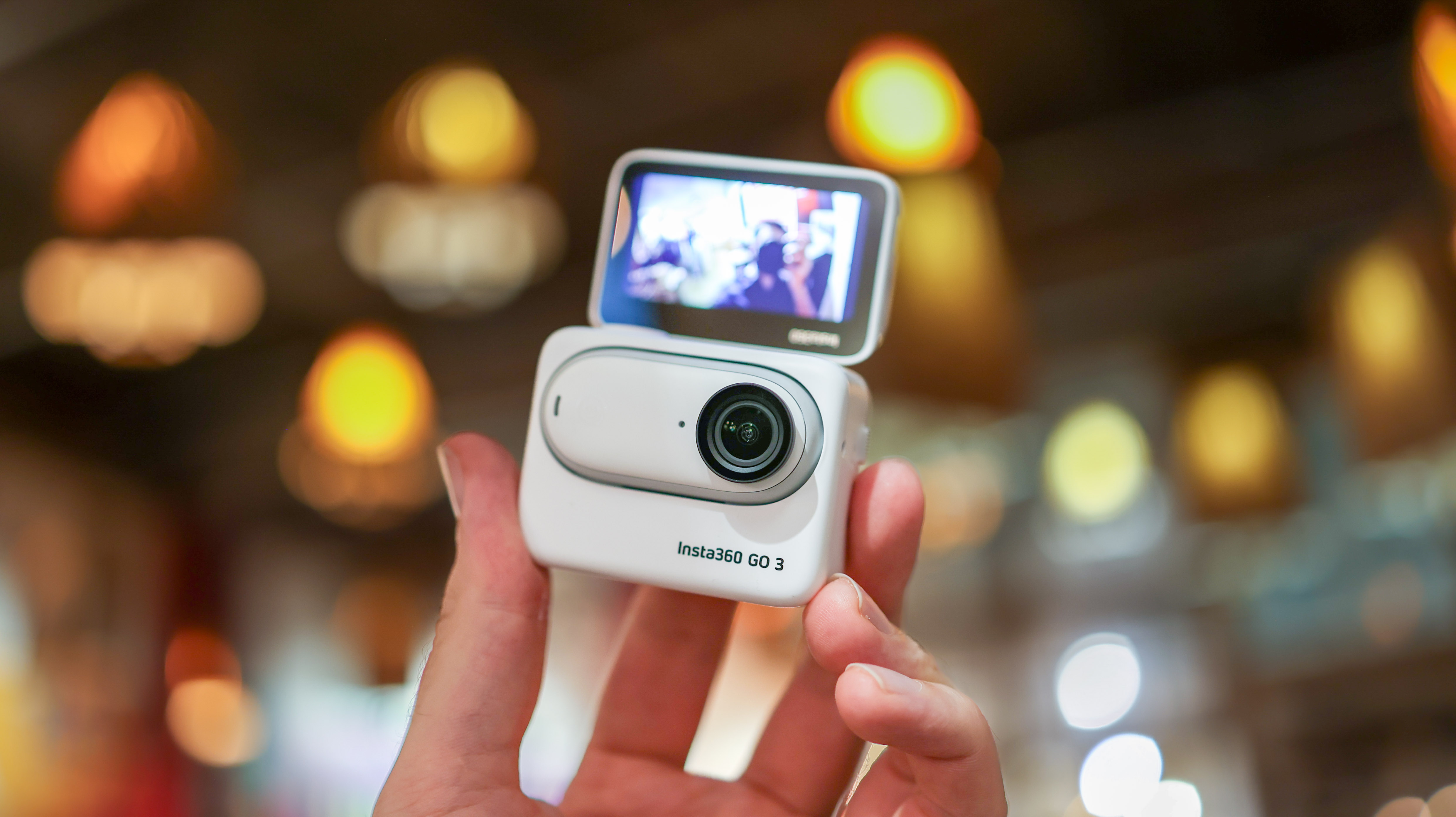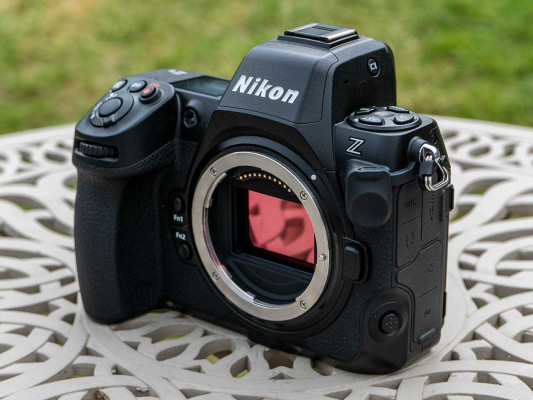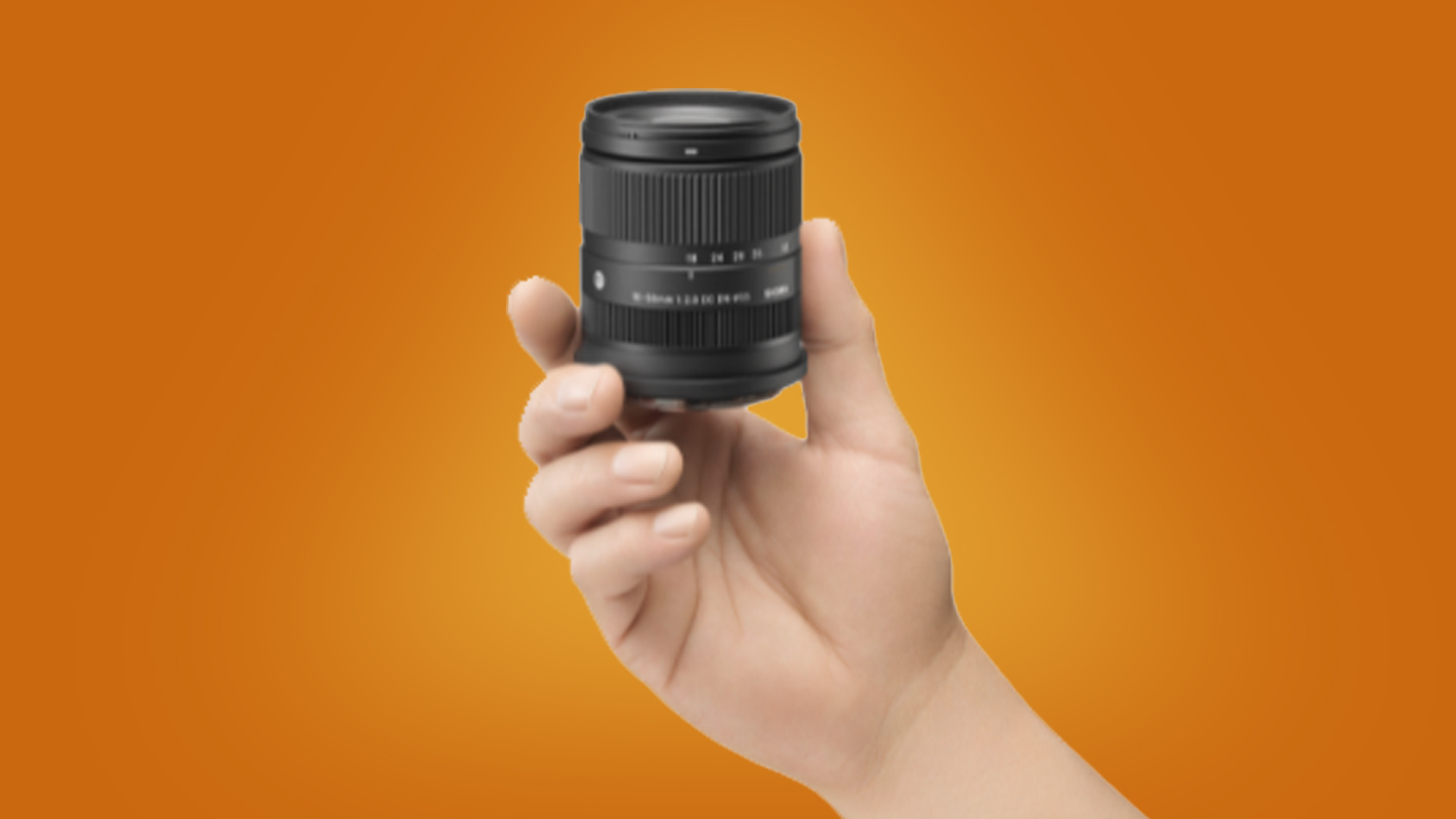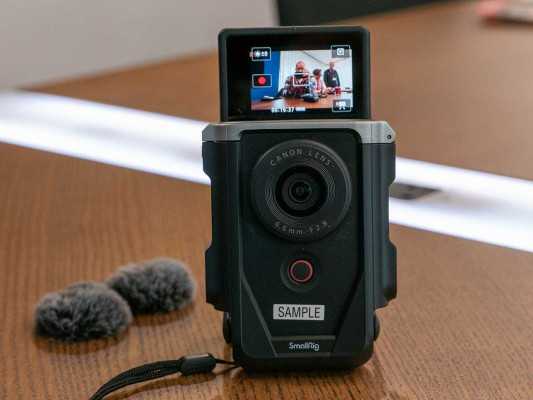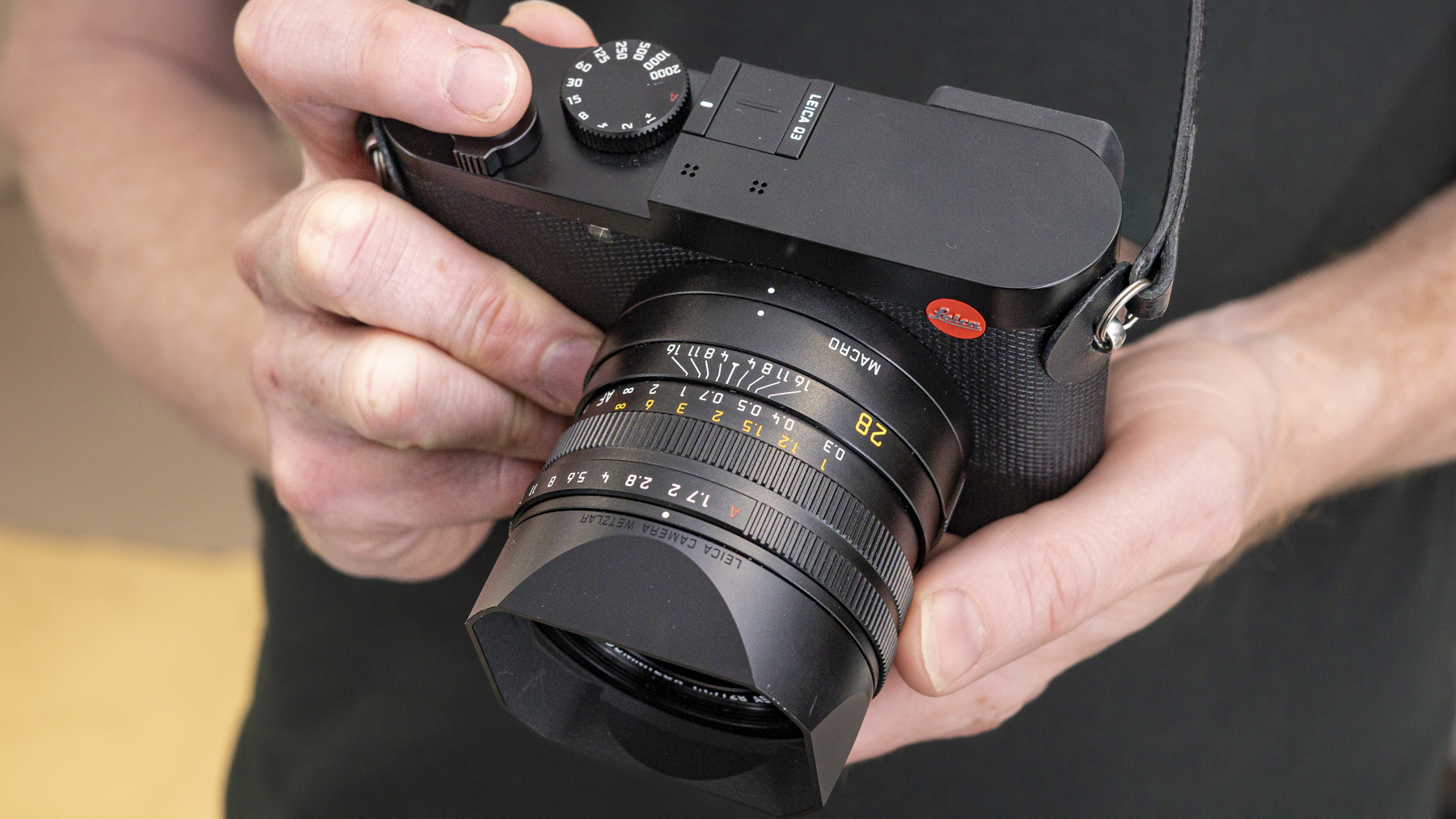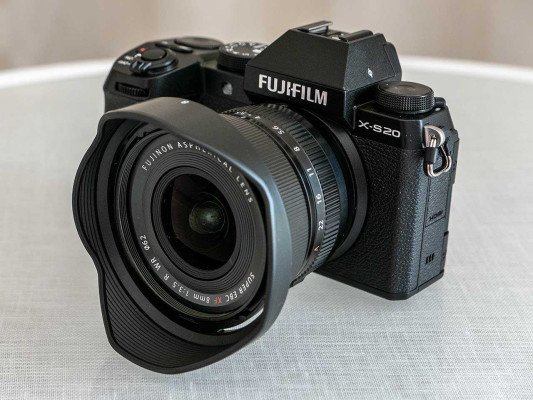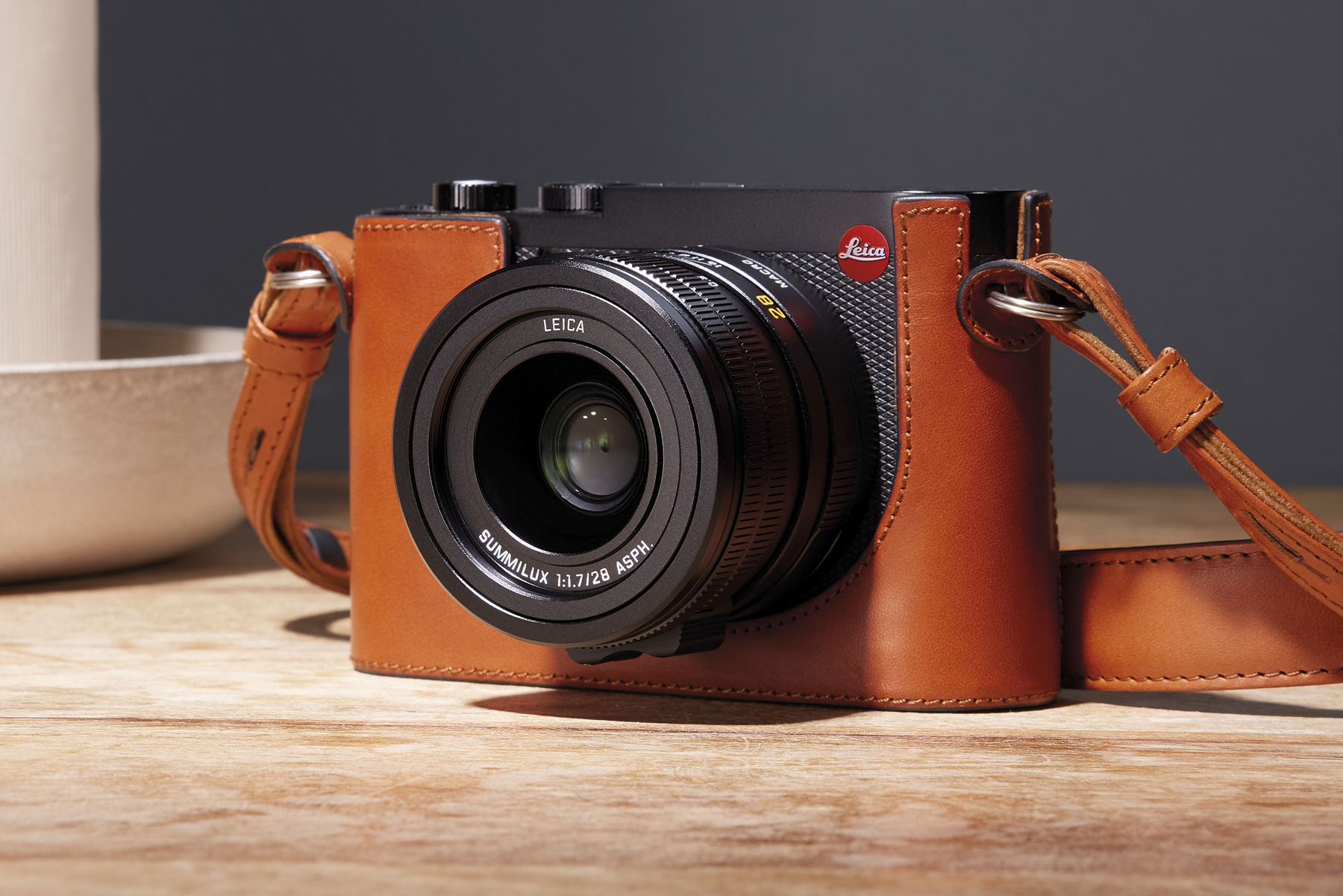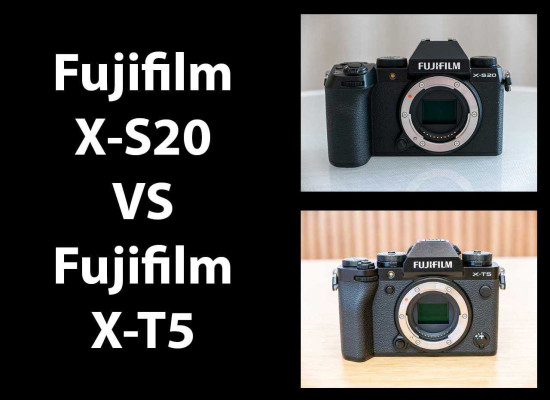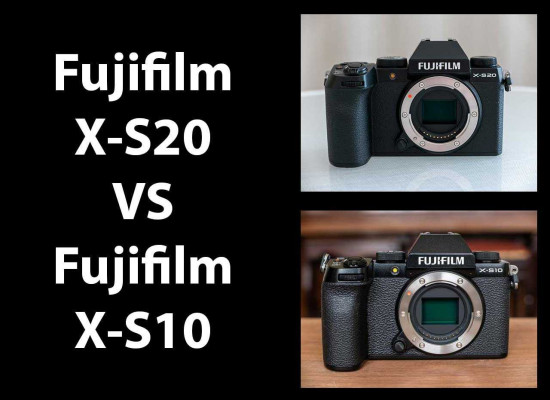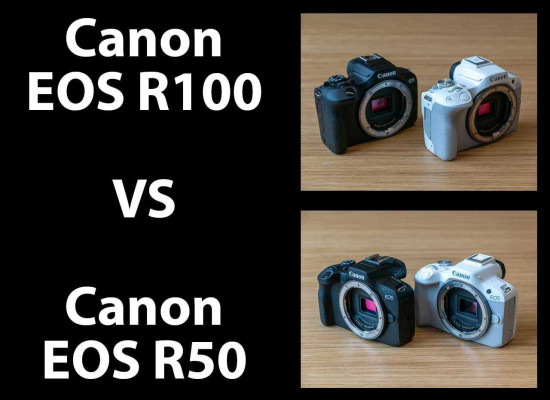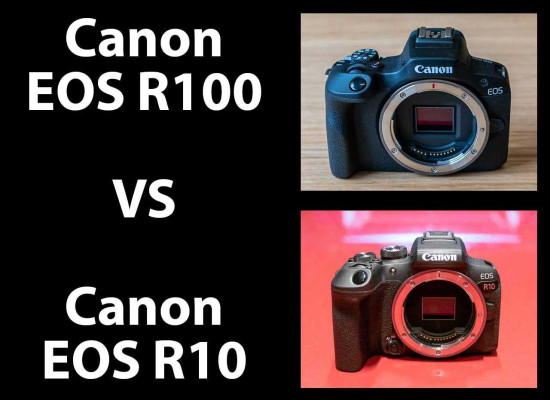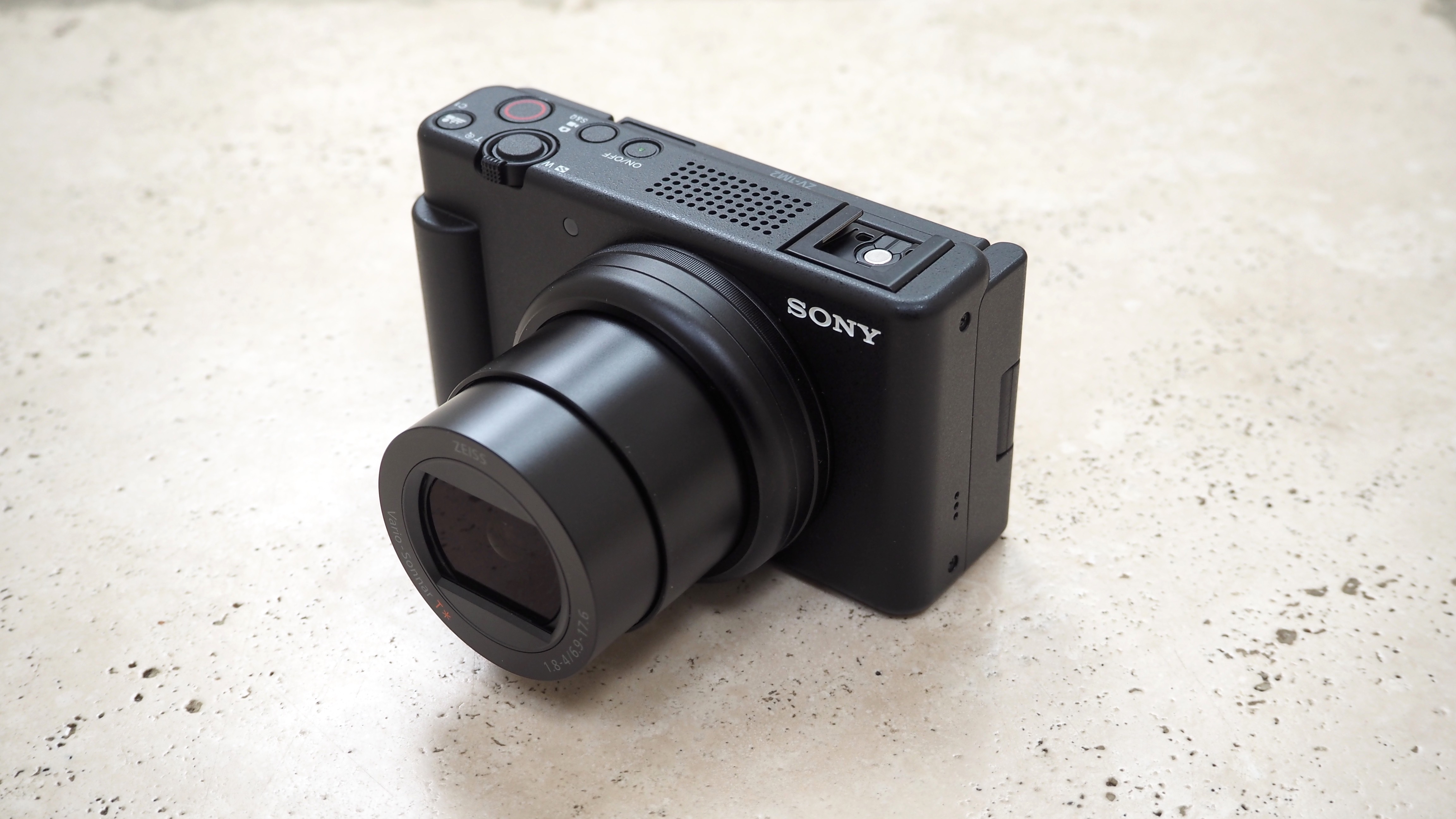Reviews

Sony a6700 initial review
DPReview Latest |
Product photos by Richard Butler
The Sony a6700 is the latest enthusiast-level APS-C mirrorless camera from Sony. It uses a 26MP BSI CMOS sensor with image stabilization, with a comprehensive set of stills and video features.
Key specifications
- 26MP BSI CMOS APS-C sensor
- Bionz X processor and dedicated 'AI Processing Engine'
- AF tracking with subject recognition, 759 AF points with 93% coverage
- 11 fps shooting with mech or electronic shutter
- Lossless Raw compression option
- HEIF and HLG Still Image modes
- 4K up to 60p from 6K capture
- 4K/120 from 1.58x crop
- 10-bit video with 4:2:2 or 4:2:0 color
- S-Cinetone, S-Log3 and HLG profiles
- Uploadable LUTs
- USB 3.2 Gen 2 (10Gbps) output
- 2x2 MIMO Wi-Fi
- UVC/UAC streaming up to 4K/30
The Sony a6700 will be available from the end of July 2023 with a list price of $1399, body only, $1499 with the 16-50mm F3.5-5.6 OSS power zoom or $1799 with the 18-135mm F3.5-5.6 OSS.
Index:
- What's new
- How it compares
- Body and controls
- Handling
- Image quality
- Autofocus
- Video
- Sample gallery
- Specifications
- Sony press release
What's new
 |
Front dial
For all the technological updates in the camera, perhaps the most significant change in the a6700 is the adoption of a second command dial on the front of the camera. This makes it Sony's first a6x00 series camera to allow control with forefinger and thumb, rather than having only thumb-controlled dials. This brings the camera into line with the Sony a7 series and, for that matter, most other cameras costing more than about $1000.
26MP BSI CMOS sensor
The a6700 uses a BSI CMOS APS-C sensor, which we have to assume is the same one used in Sony's FX30 cinema camera. What will be interesting to see is how the performance of this chip compares with that of the 26MP BSI sensors used in Fujifilm's X-T4 and X-S20, and Ricoh's Pentax K-3 III.
The sensor has AF points scattered across most of its area, giving an AF system that covers 93% of the image area, up from 84% on the previous generation of Sony APS-C cameras.
Updated processor
The other most significant hardware change is the use of the latest ('Bionz XR') processor along with a dedicated processor for handling the complex 'AI' algorithms created by machine learning. This processor combination is one we saw in the company's ZV-E1 full-frame vlogging camera, and it represents a big step forward for the APS-C series.
As well as bringing the power to deliver the camera's subject recognition AF modes, it also allows the a6700 to offer the ZV-E1's vlogging functions that can recognize a subject, crop in on it and interpolate the video back up to your chosen output resolution, in real time.
But beyond the performance improvement that comes with greater processing power, the move to a newer generation of processor brings all the other features and advances Sony has made since the a6600. This means a significantly revised and improved menu system, the option to record losslessly compressed Raw files and the ability to capture 10-bit video, which delivers much more flexible Log footage and full HLG HDR video.
As well as HLG HDR video, the a6700 can shoot 10-bit HLG stills in the HEIF format. It can also shoot non-HDR HEIFs in your choice of profile (including HLG, oddly). You'll need to shoot HEIF only (no Raw) and select the HLG Still option if you want your images to be recognized as being HDR, though.
Video
 |
| The a6700 becomes the first in the series to utilize a full-articulated rear LCD panel, supporting its enhanced video capabilities. |
The a6700 is built around what's almost certainly the same 26MP BSI CMOS sensor as the FX30 from the company's Cinema line. And, correspondingly, the a6700's video capabilities are pretty impressive.
The a6700 will shoot up to 4K/60p from its full sensor width or up to 120p from a 1.58x cropped region. Notably, it'll do this while capturing 10-bit precision and up to 4:2:2 color.
As with recent Sony models, you get the choice of XAVC HS (H.265), XAVC-I (All-I H.264) or basic XAVC-S (Long GOP H.264), depending on your needs. The All-I options creep up to 600Mbps (75MB/s), which demand the use of an SD card with the fastest V90 rating, but most modes will happily save to slower cards.
From the recent ZV-E1, the a6700 gets the vlog-friendly modes, with a series of large on-screen buttons, and the 'Auto Framing' modes that punch-in on recognized subject types and follow them around. This is designed for use with a wide-angle composition and the camera mounted on a tripod. The a6700 doesn't have the 'Dynamic Active Steady Shot' mode that can keep you framed in the same composition, using cropped-in image stabilization.
LUTs
The a6700 lets you upload Look Up Tables (LUTs) that map log capture values back to output-ready color and lightness values. These can be used in two ways: they can be directly applied to the footage (essentially making them an uploaded color mode), or used just used to preview the impact they would have if applied, so that the on-screen preview is comprehensible. If used for previewing, the LUTs can be embedded alongside the video file, so that they're available for post-production.
How it compares
The a6700 arrives into an enthusiast-level APS-C market that's going through something of a revival, taking its place alongside recent launches such as Canon's EOS R7 and Fujifilm's X-T5. We haven't included any Micro Four Thirds models here, not because we see them to be a distinct class but because the OM System OM-5 is significantly less expensive (and less capable in video terms), and the faster shooting OM-1 is appreciably more expensive.
| Sony a6700 | Canon EOS R7 | Fujifilm X-T5 | Sony a6600 | |
|---|---|---|---|---|
| MSRP at launch: | $1399 | $1499 | $1699 | $1399 |
| Pixel count | 26MP | 33MP | 40MP | 24MP |
| Sensor size / type | APS-C BSI CMOS | APS-C FSI dual pixel CMOS | APS-C BSI CMOS | APS-C FSI CMOS |
| Maximum burst rate |
11fps mech |
15fps mech 30fps elec |
15fps mech 13fps elec |
11fps mech |
| Image stabilization rating | 5.0EV | Up to 7.0EV | Up to 7.0EV | 5.0EV |
| Viewfinder resolution mag (equiv) |
2.36M dots 0.70x |
2.36M dots 0.72x |
3.69M dots 0.8x |
2.36M dots 0.70x |
| Rear screen | 3.0" 1.04M dots fully articulated | 3.0" 1.62M dots fully articulated | 3.0" 1.84M dots Two-axis tilt |
0.92M dot tilting |
| Video | 4K/60 (o/s) 4K/120 (crop) |
4K/30 (o/s) 4K/60 sub-sampled or 1.81x crop |
6.2K/30 |
4K/24 (o/s) 4K/30 (o/s 1.23x crop) |
| 4K/24 rolling shutter (highest quality) |
15.4ms (o/s) | 15ms 30ms (o/s) |
15.3ms 24.9ms (o/s) |
∼40ms (o/s) |
| 10-bit video options | S-Log3 HLG |
C-Log 3 HDR PQ |
F-Log2 F-Log HLG |
— |
| Card slots | 1x UHS-II SD | 2x UHS-II SD | 2x UHS-II SD | 1x UHS-I SD |
| Battery life rating (LCD/EVF) | 570 / 550 | 660 / 380 | 580 / 590 | 820 / 710 |
| Weight | 493g (17.4 oz) | 612g (21.6oz) | 557g (19.6oz) | 503g (17.7oz) |
| Dimensions | 122 x 69 x 64mm | 132 x 90 x 92 mm | 130 x 91 x 64 mm | 120 x 67 x 69mm |
The Sony is the cheapest camera in this company, but this doesn't stop it from being competitive. The more expensive Fujifilm includes a nicer viewfinder, while both it and the Canon promise significantly more effective stabilization. However, it's worth noting that the a6700 is not only alone in offering 4K/120 capabilities (albeit with a significant crop), it's also delivering oversampled 4K taken from 6K capture with readout times comparable to the sub-sampled footage from its two main rivals. On both the Canon and Fujifilm you need to choose between high detail footage and low rolling shutter, whereas the a6700 delivers both.
Body and controls
 |
The a6700 looks a lot like previous a6x00 series cameras, but a little larger. Closer inspection reveals a series of changes, though. There's that front command dial, at last, and a dedicated dial for switching between Stills, Video and Slow & Quick video modes, set just below the exposure mode dial.
In the redesign, the switch that used to change the function of the back-plate button has gone, and the button is now marked as AF-On, and the C3 button at the top left of the control cluster has also been deleted, meaning there's one button and one switch fewer than on the a6600.
The [Rec] and C1 buttons have also been swapped, meaning it's no longer nearly impossible to activate video recording and, somewhat paradoxically, possible to activate it inadvertently.
The body itself is constructed from magnesium alloy, with the usual claims of environmental sealing at all the joins. It has both mic and headphone ports, a micro HDMI socket and a USB Type C port. This port is compatible both with the USB power delivery and USB 3.2 Gen 2 (10Gbps) data transfer standards.
The move to USB-C means the a6700 isn't compatible with any remote controls that used the USB Micro-B/Multi port on previous Sony cameras, and the lack of IR receiver on the hand grip excludes those. Instead Sony's Imaging Edge smartphone app can act as a remote.
 |
The camera is built around a single UHS-II SD card slot. Unlike several other recent Sony cameras, there's no CFexpress Type A socket set inside it. The fastest, V90 UHS-II SD cards are rapid enough to cope with the 600Mbps of the camera's highest data rate video, though.
Viewfinder
 |
The a6700 has a 2.36M dot (1024 x 768px) OLED viewfinder that can run at up to 120fps. There's no apparent change in preview resolution if you use this mode, but battery life will be reduced. The viewfinder optics deliver 1.07x magnification, equivalent to 0.71x in full-frame terms.
The camera also has a fully articulating rear touchscreen. It's a 1.04M dot (720 x 480px) panel. This can be used to set the AF point or specify a subject to track, with the option to use it as a swipeable touchpad when you've got your eye up to the viewfinder. There's then the option to limit the touchpad to certain regions of the screen, to prevent nose-activated-focus if you tend to put your left eye to the finder.
Battery
 |
The a6700 has the same NP-FZ100 battery as the a6600, giving the camera some of the best battery life in its class. The camera is rated as delivering 570 shots per charge if you use the rear LCD or 550 if you use the EVF.
As always, these numbers, based on standard testing defined by CIPA, tend to assume a very battery-intensive way of shooting, so it's not at all uncommon to get nearer twice these numbers if you're less profligate. A rating of over 500 shots per charge means rarely having to worry about the battery: you should get multiple days of fairly extensive shooting out of it. As you'd expect, you can also power or charge the camera over USB, too.
Handling
 |
The addition of the front command dial does wonders for the a6700's usability. For the first time in over a decade, we have an enthusiast-focused APS-C model from Sony that has the level of direct control we've come to expect
The menus are also vastly improved, both in terms of which functions are grouped together and in the greater visual indications about where settings can be found, before you've dug all the way down to find them. As before, with a little setup and customization, you'll rarely need to delve into the menus at all, but with the bonus that they're much less confused and opaque than before, when you do.
It's definitely worth reconfiguring the camera when you get it, though. We've long complained that Sony cameras come set to AF-A mode, locking you out of the tracking AF modes that have generally been one of their main selling points. The a6700 addresses this by setting 'AF Tracking + AF On' to its large AF-On button. Which at least means you have immediate access, but also means that there are three different AF modes accessible, by default (the central button of the four-way controlled initiates a single AF acquisition in the center of the frame).
Equally worth modifying, in my opinion, is the decision to make the camera's main two command dials operate aperture and shutter speed, but not have anything to set exposure comp or ISO. My first action will always be to set one dial to exposure comp and then have the other control Shutter Speed or Aperture value, depending on my shooting mode.
Overall, the a6700 can be set up to be the most likeable camera in its series
Between the two command dials and the AF-On button, I have enough well-positioned controls for most of the shooting I ever do. And, while I find the C1, C2, C3 and [Rec] buttons a little difficult to reach from the shooting position, they give me plenty of options for settings I change semi-frequently. A few tweaks to the Fn menu and I have semi-fast access to almost everything I need to change (though I'd need access to three settings: 'File Format,' 'JPEG/HEIF Switch' and 'HLG Still' if I wanted to be able to jump between shooting Raw + JPEG and capturing HDR HLGs, so I can't imagine ever doing that).
Overall, though, the a6700 can be set up to be the most likeable camera in its series, having gained a lot of the ergonomic improvements made iteratively across the wider a7 series. Even with the camera's very good AF tracking, which makes selecting an AF target and then recomposing very reliable, I still find myself cursing the lack of AF joystick, occasionally.
Image quality
Our test scene is designed to simulate a variety of textures, colors and detail types you'll encounter in the real world. It also has two illumination modes, full even light and low directional light, to see the effect of different lighting conditions.
Autofocus
 |
| Vehicle detection mode seemed to recognize this tram in New Orleans Sony E 16-55mm F2.8 G | ISO 100 | 1/400 | F5.6 Photo: Richard Butler |
The a6700's autofocus system is a continuation of the one used in Sony's cameras for many years: you can choose from seven sizes of AF area, from 'Wide,' which covers almost the whole frame, down to single AF spots. In AF-C mode you gain access to 'tracking' variants of each of these AF areas, letting you decide how you want specify a subject to track.
On top of this are the camera's subject recognition options, with the options being: Human, Animal/Bird, Animal, Bird, Insect, Car/Train, Airplane. These don't completely override the AF area you select though: the camera will try to focus on the subject closest to your chosen AF point, if there's more than one subject, and will ignore a recognized subject if it's too far away from your chosen point. This means you don't constantly have to turn subject detection off if you want to focus on something other than a recognized subject in the scene (though you will have to if you want to focus on something close to a recognized subject).
We've not had time to fully test the a6700's AF system, yet, but have had very positive experiences so far with both the human and animal detection modes. The camera is very persistent at following the intended subject and not getting distracted by other potential subjects nearby.
However, we noticed that in some circumstances the camera can take something like half a second to identify what it should track if you select a target that the camera hasn't been trained to recognize. We'll continue to test the AF system in a range of situations in the coming weeks.
Video
The oversampling means the a6700 is able to offer details levels comparable to the 'HQ' modes of the Fujifilm X-T5 or Canon EOS R7. This puts it ahead of either the X-T5 or EOS R7 in their subsampled modes. Switch to 60p and the Sony is capturing more detail than the Fujifilm, and resolving far more than Canon's comparable mode. The 120p mode is less detailed, but very few cameras even offer this option.
The a6700's rolling shutter figures are a big step forward compared with its predecessors. The full-width 4K footage reads out at a rate of 15.4ms, which is nearly twice as fast as the a6600 could manage. The rate is the same for 24, 30 and 60p capture. We generally consider anything below 20ms to be pretty good and anything below 10ms to be excellent, so 15.4ms is a very good result for oversampled footage. The 4K/120p, with its rather extreme 1.58x crop, measures as 7.3ms.
The a6700 includes an 'Active' stabilization mode that includes digital stabilization. This applies a 1.13x crop to the footage and allows the camera to move the crop around, within the standard video regions, to correct for more dramatic motion than the sensor shift alone can provide. All the camera's gyro data captured during recording is saved into the video file, so that you can apply more powerful digital correction (or less correction, with less crop, in some circumstances), in Sony's 'Catalyst' post-production software.
4K/120p appears to be taken from a roughly 3.9K region of the sensor, so there's no leeway to crop in any further to give digital stabilization, even if the processor proved able to keep up.
Initial impressions
By Richard Butler
 |
| Sony E 16-55mm F2.8 G | ISO 800 | 1/3200sec | F2.8 Processed with Adobe Camera Raw, Camera Std color mode, exposure and shadows reduced. Photo: Richard Butler |
The a6700 retains the look familiar from the existing a6x00 series cameras, high-end and otherwise, while incrementally improving on the previous generation camera in almost every respect. The sensor is newer, the pixel count higher, the video capture is faster, both in terms of frame rate and readout rate and the autofocus is improved.
However, it's the collective value of tweaks to the user experience that end up being the things that struck me most: the addition of a front command dial finally brings the series into line with its enthusiast camera peers, meaning you have more exposure control at your fingertips (rather than just your thumb). The revised menus are also a vast improvement over the previous camera, making it a much easier camera to learn your way around.
The technology improvements are significant: when the a6300 was launched in 2016 its combination of 4K and Log capability were fairly cutting-edge, but its significant rolling shutter, need to crop in to deliver 4K/30 and its 8-bit output (all maintained across subsequent models), look pretty off-the-pace today. Our early impressions of the video AF are that it's probably the most reliable of any of its peers, meaning the up-to-date video capabilities that are backed up by usability.
There are still moments of awkwardness to the a6700: engaging and disengaging HLG Stills capture is a multi-step process that you'll probably need to assign to one of the three memory recall positions on the mode dial if you want quick access. Likewise, the lack of AF joystick slows the camera down, compared with the likes of Fujifilm's X-T5 or Canon EOS R7.
Overall, though, the a6700 looks like an major step forward for Sony's APS-C lineup. We're still testing the autofocus and getting a feel for the video performance, so we want to get more of a grip on those before we complete our review. We'll continue to put it through its paces and look to wrap things up in the coming weeks.







